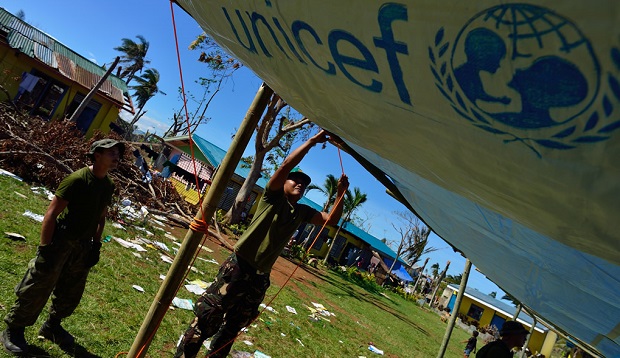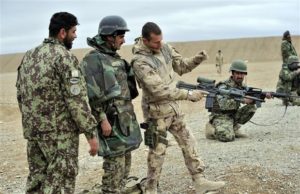By Sarah Jane Meharg
A government that wants to increase human security, tackle economic inequities, mitigate the effects of climate change, and address the reign of terror against women and children around the world is a government that must use the methods of collective security to reduce its own financial burden, and wield its political influence earned during 60 years of United Nations (UN) peacekeeping.
The government of Canada is beginning to understand the changing nature of the security environments in which it intends its interests to be realized and will need to have many different tools available to manage its foreign policy interests.
One such tool is UN peacekeeping – now understood as peace operations – which occur before, during and after violent armed conflicts. It is in this multidimensional security environment that Canada has a role as a keeper of the peace. This is a role that is highly respected within the international community and one that enhances the human security of war-affected peoples. In essence, UN peacekeeping contributes to the government’s interests related to security underscored by economic development.
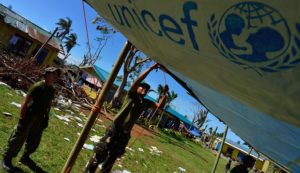
Canada’s strategic objective in undertaking UN peace operations should be focused on shoulder-to-shoulder cooperation with its allies. This enables the government of Canada to be a part of the discussions on international governance and collective security among allies and ensures that Canadian forces are protected through a logical chain of command, reliable communications, and logistics, as well as necessary combat support when deployed to nonpermissive UN operations. Current debates have polarized Canada’s contributions to UN peacekeeping, suggesting that it is an ‘either-or’ question: we either do peacekeeping or, we do not. This is an illogical argument which does not reflect current inquiry into conflict management tools nor a decade’s worth of statistical analysis linking UN peacekeeping with durable peace and security outcomes.
Canada has been involved and will continue to be involved, in UN peacekeeping for decades to come by leading at the UN executive level, deploying military, police and civilian personnel to missions, and developing innovative ways to manage conflicts through the remit of UN peacekeeping. It is a matter of considering in what way Canada’s contributions will earn higher dividends for Canadian political interests, increase knowledge acquisition within the relevant government departments and agencies, and in the end, contribute to global peace and security in a way that directly benefits Canadians.
This essay offers some realistic peacekeeping options to the government of Canada based on Canada’s historic involvement in UN peacekeeping, counterbalanced against contemporary challenges and opportunities of global peace and security, and substantiated with the body of evidence that has proven that peacekeeping works.
BACKGROUND
Envisioned by Canada’s Lester B. Pearson as an unarmed or lightly armed military force, made up of personnel from a number of countries, under UN command, deployed to areas where warring parties required a neutral party to observe a peace process, the United Nations Emergency Force was formed and deployed to the 1956 Suez Crisis as the first peacekeeping Canada earned its peacekeeping stripes as one of the top contributing states from the 1950s through to the 1990s. In 1988, at the height of Canada’s troop contribution era, UN peacekeeping forces were awarded the Nobel Peace Prize, recognized for making a decisive contribution to the resolution of conflict around the world. Both intrinsically and extrinsically, Canada derives its identity as a peaceful country from a long history of peacekeeping and its successful involvement in the entire spectrum of conflict management ‘peace’ processes.
From the late 1990s, and due to a myriad of changing international dynamics, other UN member states have taken over the bulk of personnel contributions from developed states, cutting their own teeth on conflict management within insecure environments that matter to global peace and security. There are 42 states ahead of Canada’s contribution, with Indonesia, Burkina Faso, China, Senegal, Nepal, Rwanda, Pakistan, Bangladesh, India and Ethiopia supporting the bulk of all 16 UN peacekeeping missions around the globe. These 10 countries alone contribute 51 per cent of all troops and police. In return, they receive payments per person deployed, which has become a rich resource benefiting developing states, and upon which many now rely.
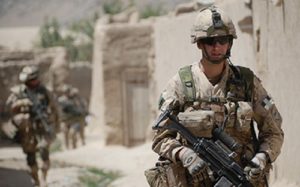
Canada is currently serving in five UN missions around the globe, with an average contribution of between 76-110 personnel. These include MINUSTAH (86 deployed to Haiti and the only mission with Canadian women), MONUSCO (8 deployed to the Democratic Republic of Congo), UNFICYP (1 deployed to Cyprus), UNMISS (10 deployed to South Sudan), and UNTSO (10 deployed to the Middle East, headquarters Jerusalem). Canada is among a group of 26 states that contribute between 100-500 peacekeepers to all UN missions.6Approximately 20 per cent of states contribute peacekeepers within this range.
Today, in places like Mali and Central Africa, peacekeeping missions are confronted with dangerous conditions as well as remote geostrategic locations. Out of the 16 missions, five are authorized with Chapter 6 mandates, related to the pacific settlement of disputes. Chapter 6 missions are in low threat, relatively secure ‘permissive’ environments and do not use force. The remaining 11 missions are authorized with Chapter 7 mandates, related to action with respect to threats to the peace, breaches of the peace, and acts of aggression. Chapter 7 missions occur in volatile insecure theatres where operations are directly targeted. Chapter 7 missions are combat-approved missions, in other words, use of force is the common response to local aggressors and peace spoilers.
The approved budget for all UN peacekeeping operations for the fiscal year 2015-16 is approximately USD $8.27 billion. According to UN statistics, this is less than half of 1 per cent (0.5 per cent) of world military expenditures (as of 2013). Canada is among the top 10 providers of assessed financial contributions to UN peacekeeping operations from 2013-15, ranking ninth, just ahead of Spain, and slightly behind Russia, paying 2.98 per cent of that $8.27 billion budget.
None of the top 10 financial contributors are on the list of top 10 troop and police contributing member states. So, while Canada deploys approximately 100 peacekeepers, its annual apportioned financial contribution is USD $246.5 million.
CONTEMPORARY CHALLENGES AND OPPORTUNITIES
There is no sense in debating contributions if we do not know whether Canada’s contributions make a difference to global peace and security. In other words, does UN peacekeeping work?
More than a decade’s worth of evidence concludes that with the majority of missions, peacekeeping operations are effective in maintaining peace. A statistical relationship has been demonstrated showing that on average peacekeeping works to reduce the risk of renewed conflict. To be sure, when peacekeeping is deployed within the right environment – one that may be hostile to the presence of UN armed forces, yet is permissive to the political peace process and the economic benefits stability typically brings – it is a cheap alternative compared to collective security costs incurred by violent conflict and mass migrations of refugees, and the far-reaching destabilizing effects on economies such situations have on the rest of the world.
The positive results of peacekeeping have been substantiated, but what of the negative consequences of missions? UN peacekeepers have been accused of fraud, corruption and, of particular concern, sexual abuse which has included child rape, gang rape and soliciting prostitutes during peacekeeping missions. The UN is focused on working with troop and police contributing countries to charge their offenders to the full extent of their state laws to send a strong message to potential perpetrators of such egregious human rights violations while serving on UN missions.
This, though, is not of geopolitical concern and, rather, is a historic problem systemic within environments of extreme chaos and violent conflict. What is of primary concern is keeping the peace so that we avoid further global destabilization, politically, socially and economically.
The global context of peace and security has undergone social, political and economic transformation since the inception of peacekeeping in 1956. The ‘ways’ of peacekeeping that Lester B. Pearson and Dag Hammarskjöld envisioned are less applicable to the challenges posed in a post-Westphalian world where non-state dynamics, new technologies, and ungoverned spaces create shaky ground on which to manage conflicts.
There has been an ongoing recalibration of power and politics along different lines, and no geopolitical observations have yet accurately assessed our collective future related to defence and security and how Canada will be able to influence global affairs. With the rise of the so-called Islamic State and other complex non-state dynamics around the world, the political landscape is unsettled and will remain so for another four decades. Yet, the ‘ends’ sought through peacekeeping remain the same: local durable peace and security for civilians.
RECOMMENDATIONS
The Liberal government’s Defence Review was called on 6 April 2016. Defence Minister Harjit Sajjan’s review will determine defence capabilities – what the Canadian Armed Forces have and what they need and how these capabilities will be employed to confront conflict and calamity in the environment of global instability. Defence Reviews are significant benchmarks because they set out guiding principles informed by foreign policy within the emerging social, political and economic context of the day.
Historically, such reviews have not aligned with fiscal frameworks to develop fully the grand strategies envisioned in such White Papers. If ends, ways and means – in other words, the fiscal framework – are not in lock-step, then, for the next decade Canada will be out of step in achieving its defence-related foreign policy aims.
The security and defence budget is approximately CAD $20 billion, rising with inflation each year. Canada’s UN peacekeeping financial contribution does not come out of the security and defence budget, but rather directly from Global Affairs Canada, the department responsible for making all assessed contributions to international organizations, of which UN peacekeeping is one. Defence dollars are spent at home and internationally. There is an (irrational) fear held by the government that the defence budget is bloated and there is a move afoot by Canada’s new government to carve out a leaner, more agile military from the already gutted reality of the past decade.
Putting the ongoing procurement debacle aside, defence requires funding specifically aligned with the readiness to deploy.
Peacekeeping missions have expanded to include many peace operation activities that have been empirically proven to reduce conflict recidivism, including deployments into large, expensive and increasingly complex operations; developing and implementing transition strategies for operations where stability has been achieved; and equipping communities with capacity for long-term peace and stability, evidenced through economic development. UN peacekeeping remains one of the most powerful tools wielded by the international community to manage peaceful outcomes of contemporary armed conflicts, yet, like any other capability development, peacekeeping requires training that is specific to its remit. The tool is only as effective as its contingent troops, police and civilian personnel, and this boils down to deployment experience.
Deployments, among other things, help identify the personnel who cannot manage the stress of operations and who may detract from mission successes. Only with real experience – rather than simulations and exercises – can successes be gained. For example, the United States has innovated its ability to gain relevant and timely deployment experience by running ‘live exercises’ during its humanitarian assistance and disaster response operations (HA/DR) – a type of operation that requires a whole-of-government approach to succeed.
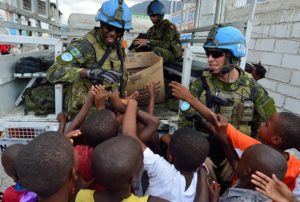
If we are not doing Cyprus peacekeeping anymore, we certainly need to avoid doing the same type of peacekeeper training. Canada can apply innovative ‘live exercising’ to get on-the-job peacekeeping training. Deploying more Canadians on UN missions means that they gain field experience within semi-permissive multidimensional environments and learn the lessons of international cross-cultural leadership, civil-military relations, community-based policing and security, and other innovative techniques that bring about lasting stability. It is recommended that the government deploy 1,000 contingent troops, police and civilian personnel per year to the UN peacekeeping missions that matter to national security, and fall within its defence related foreign policy aims. The cost of this increase would be approximately 10 times the current cost of the deployment of 100 personnel. Deployments should be short term (1 month), medium-term (3 months) and long-term (6 months to 1 year) to yield learning and innovation. t is recommended that the government engage existing defence lessons-learned capabilities to assess the experience of troops, police and civilian personnel to increase knowledge acquisition within the relevant government departments and agencies.
When the government of Canada decides to deploy the CAF to an existing or new UN peace operation, it must ensure the following pieces are in place:
- A clear chain of command exists in theatre and with the CAF in Canada able to make decisive changes if the mission environment deteriorates beyond the remit of the mission’s mandate and Rules of Engagement.
- If deploying under a Chapter 7 mandate, Canada must guarantee – or confirm allied protection through – combat heavy weapons support in theatre prior to the deployment of CAF capabilities, such as mobile medical teams, engineering support, civilian experts, police and the Disaster Assistance Response Team (DART), if its mandate is widened beyond disaster response.
- The CAF, Canadian police and other deployed personnel foster relationships with reliable in-theatre partners in communications, logistics, and airlift in the nascent stages of Canada’s own development in these support capabilities.
- The rules of engagement (ROE) for each mission in which Canadians are deployed are robust to allow for a full spectrum of use of force by the CAF against aggressors, whether aggressor violence is focused on the local civilian population, or the UN peacekeepers themselves. If the ROEs are not robust enough, Canadians should not deploy to the mission.
Canada’s bid to participate in the UN Security Council for two years starting in 2020 is a committed position to engage fully in multilateral efforts of the international system intended to net enhanced peace, security and stability dividends. While it is pursuing a seat, it is recommended that the government focus its approach to conflict management by supporting innovative systems and processes that can be duplicated by other states and non-state actors, such as it did with the development of innovations like Results-Based Management, the Pearson Peacekeeping Centre, and Free Balance, exceeds to name a few. The remit for Global Affairs Canada (GAC) now has an economic lens, evidenced by the transformation away from supporting ‘dead aid’ that causes cyclical state-based welfare in developing states towards investment aid that ends the welfare cycle and creates autonomy in developing states while having direct economic benefits for Canada’s public and private sector contributions to global peace and security. UN peacekeeping contributions should be viewed with a similar lens in that missions can be used to deploy more Canadians to reap the benefits of live whole-of-government exercises. As well, contributions should empower the development of innovations in the conflict management industry to improve the efficacy of peacekeeping while driving Canadian economies.
While the Security Council seat would be advantageous for Canada, the government must concomitantly support UN peacekeeping by increasing deployments to missions, as well as drive public and private sector innovations for managing conflicts, all while capturing the relevant lessons to inform the government’s understanding of the changing nature of the conflict environment. It is recommended that the government establish a fiscal framework supporting peacekeeping training, deployments, lessons learned and conflict management innovation exceeds the existing budget for these existing capabilities by 10 per cent.
This plan will yield the highest dividends for global peace and security which, in turn, underscores Canada’s foreign policy interests. Working shoulder-to-shoulder with allies on UN peace operations permits Canada entry to the decision-making table regarding international governance and collective security.

